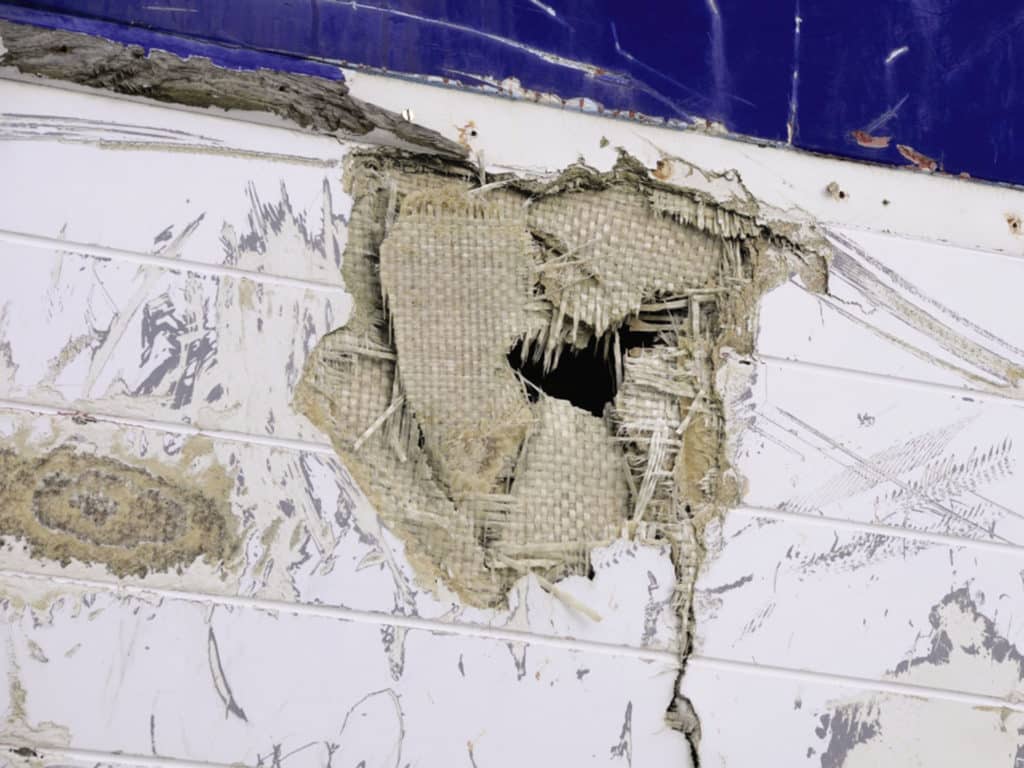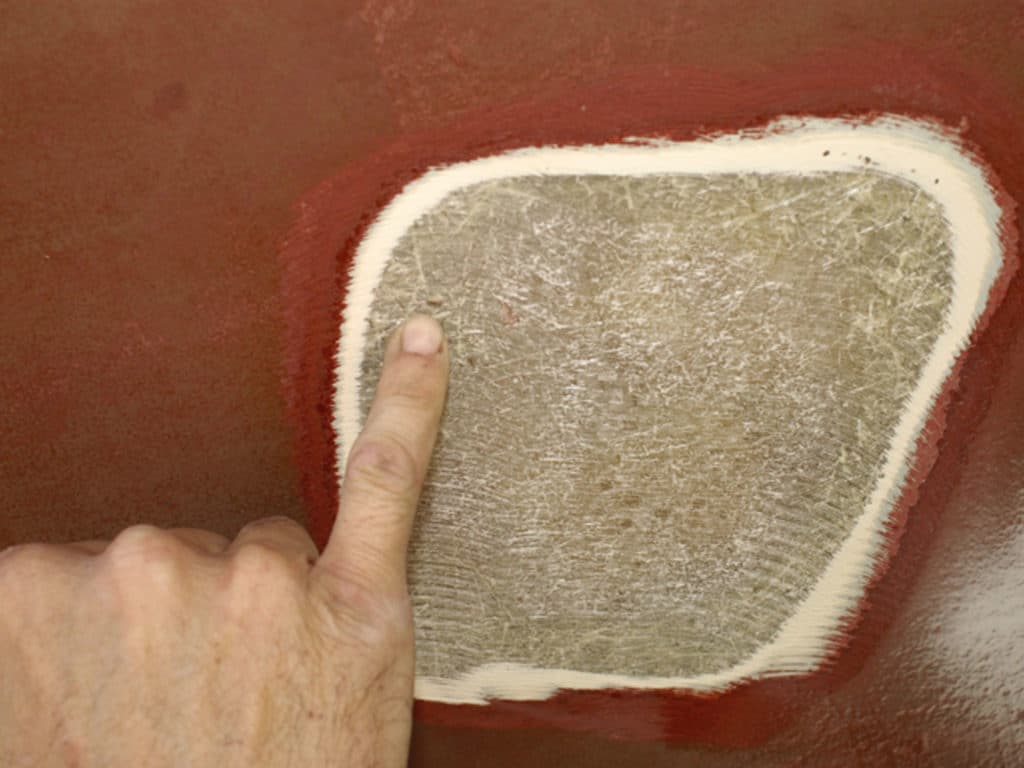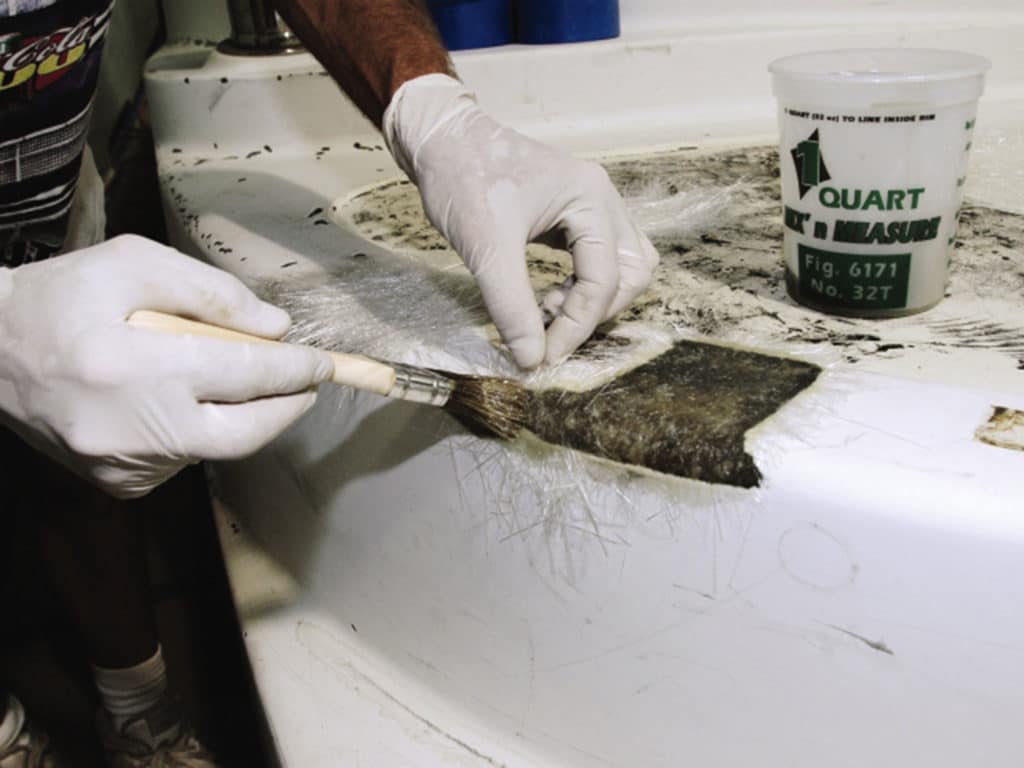
In the midst of conducting a used-vessel pre-purchase inspection a few years ago, I encountered a textbook example of a failed secondary bond. I sat in the mid-bilge area with the buyer and rested my rigging knife on a shelf that had been recently installed to support a large battery bank. OK, hold that thought.
The “parts” of a fiberglass boat—including the hull and cabin/deck structure—are made using resin and reinforcement. The former might be polyester, vinylester or epoxy, while the latter can range from traditional glass fabric, or E-glass, in various weights and weave patterns, to exotics such as Kevlar and carbon fiber. Regardless of materials, the construction of these parts is accomplished in such a way that the resin used for each laminate (a single layer of resin-saturated reinforcement) is applied before the previous laminate fully cures; it’s referred to as being “green” (like unripe bananas) and establishes a chemical bond with the laminate beneath it. This is considered the primary bond, and it’s the most desirable because it is especially tenacious.
Virtually every other fiberglass component, or structure, added to the hull or deck after the initial primary layup utilizes what’s known as a secondary bond. Secondary bonds differ from primary bonds in that they rely on adhesion, or mechanical bonding, rather than establishing a chemical matrix. Components that are glassed, or “tabbed,” to the hull and deck in this manner include stringers, engine beds, structural bulkheads, structural shelving that supports machinery such as generators, and hull-to-deck joints that are glassed from the inside after being joined.

Unlike primary bonds, secondary bonds rely on achieving a good grip onto a fully cured fiberglass surface. As such, that surface requires special treatment; it can’t be smooth, slick or contaminated in any way. As the adage goes, preparation is everything, and secondary bonds are no exception. Grinding or sanding is the primary means by which a secondary bonding surface is prepared; this usually involves the use of an extremely aggressive 80-grit sandpaper, which will leave the surface rough while exposing filaments of glass reinforcement—a surface feature that is ideally suited to enhancing adhesion.
If using an electric or pneumatic grinder, avoid overheating the surface, which could damage the existing resin. For small jobs, hand-sanding is often good enough. If the surface is gelcoated, all of the gelcoat must be removed in the area to be bonded. Never attempt to bond to gelcoat; its own adhesion to the fiberglass substrate is not nearly tenacious enough for structural tension or shear loads.

Some might ask: “Why should I care about the nature of secondary bonding? My boat has already been built.” There are two cases where knowledge of secondary bonding is critical. The first involves the installation or addition of equipment. Say, for instance, you are installing a tank under a berth and need to install a shelf on which it will rest. The loads imparted on that shelf, with a full tank, in a seaway, could be considerable; it must be secure, and only a proper secondary bond will achieve this end.
The other case involves repairs from collisions or groundings. All fiberglass repairs rely on secondary bonds; if the aforementioned procedures are not carried out correctly, the result could be a failure, one which will almost certainly occur when the structure is most heavily loaded, in heavy weather or a grounding. Additionally, the tenets of fiberglass repair dictate the following: The repair should as closely as possible mimic the original laminate schedule, duplicating the fabric reinforcement type, thickness and orientation. Where repairs are concerned, more laminate is not better because it can have an effect on load distribution and the creation of stress risers. Also, the resin used should be of equal and preferably greater adhesive strength than what was used originally; that usually means vinylester or epoxy. When it comes to FRP repairs, it’s usually the quality of the work at the interface between old and new laminate that determines success.
Back to my original story: I moved my knife to the edge of the tabbing that supported the shelf, and then easily drove the point under the edge of the tabbing, separating it from the inside of the hull. It was clear to see that the surface, which was gelcoated, had been only lightly sanded, leaving no effective “tooth” for the tabbing’s resin to lock onto. It would have to be torn out and completely redone. “Better, however, to make that determination now,” I said, “than when pounding into a head sea, with 800 pounds of batteries adrift.”
Steve D’Antonio offers services for boat owners and buyers through Steve D’Antonio Marine Consulting.








